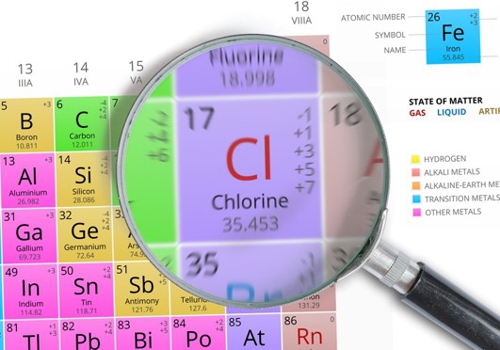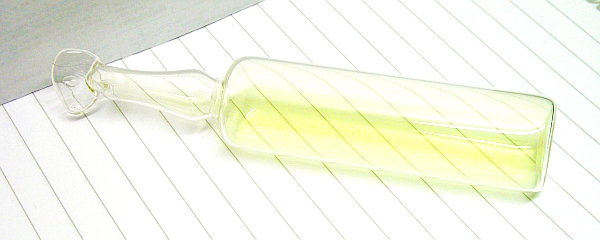Free chlorine, the name of the element is derived from the Greek word “χλωρός / chlōrós” meaning "light green, fresh" from.
Free chlorine is a chemical element with the symbol Cl and atomic number 17. In the periodic table of the elements it is in the 7. main group and heard so together with fluorine, Bromine, Iodine and astatine to the group of halogens. Elemental chlorine is under normal conditions in the form of a diatomic molecule Cl2 gaseous form. It is one of the most reactive elements and reacts with almost all other elements and many connections. The high reactivity due to the toxicity of elemental chlorine.
In nature, chlorine exist not elementary, but only tied in various compounds. The most important compounds are the chlorides, in which chlorine in the form of the anion Cl− occurs. The best-known chloride is sodium chloride, often referred to as saline or short salt.
The historically important use of free chlorine is to use as a bleaching agent. For this purpose, the chlorine could either be used in elemental form or further processed by reaction with calcium hydroxide to chlorinated lime.
Chlorine is one of the most important basic chemicals and is with a lot of 58,9 Million tons per year 2006 one of the most produced chemicals. By the industry the chlorine is produced almost exclusively by various electrochemical methods. In smaller quantities, it can also be obtained by chemical means.

Chlorine as liquefied chlorine gas in an ampoule:

Source: W. Oelen – http://woelen.homescience.net/science/index.html

Leave a Reply
You must be logged in to post a comment.